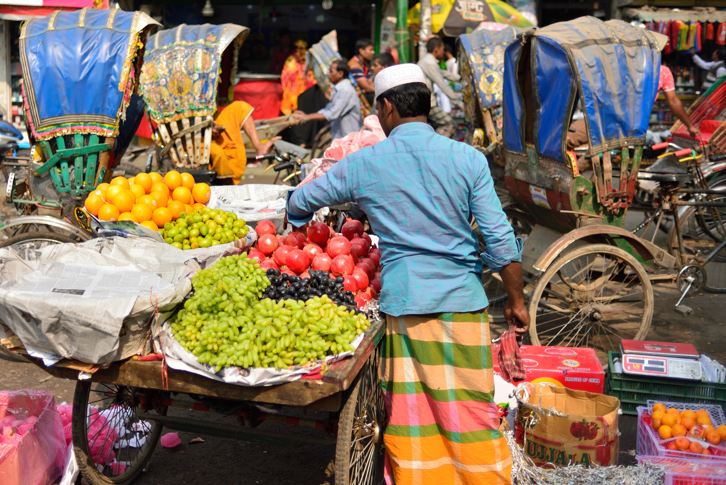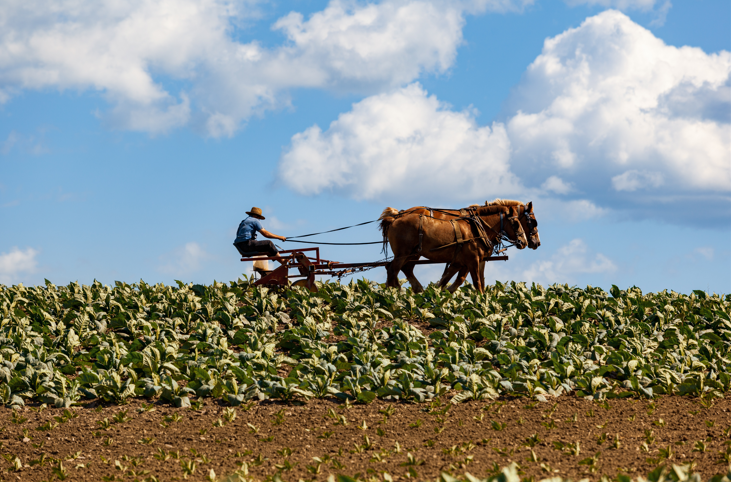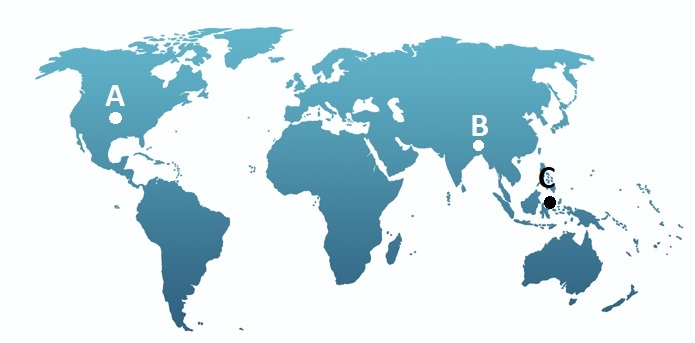
“Zero Hunger” is the topic of this unit.
■Learn the vocabulary and expressions related to hunger.
■Get to know and share your thoughts on the countries facing hunger issues
■Give a presentation about hunger.







| 1. | How much of the population of developing countries lives in extreme poverty? |
| _________________________________________ lives in extreme poverty. |


| 2. | Did you do your research on the sub-textbook? Did you find an activity to solve the hunger issues? Please tell me what the organization/association does and how you feel about it. |




In the next part, we are going to learn about “Zero Hunger.”

| 1. | Where is Bangladesh? A, B, or C? |
| The answer is _________. |



| 2. | What can you see in the pictures? Please describe as many as you can from each picture. |
 |
 |
| Answer: |






|
suffer 被る、苦しむ
Residents in remote places have been suffering from low food supplies.
|

|
shortage 不足
There is a food shortage due to a lack of cultivable land.
|

|
irrigation 灌漑(かんがい)
The government is focusing efforts on improving the country’s irrigation system.
|

|
outdated 時代遅れの
Farmers in Bangladesh still use outdated farming methods.
|



| 1. | More and more people are _______________ from malnutrition, so let’s work on this issue. |
| 2. | Statistics show that more countries are suffering from food _______________. |
| 3. | The country’s _______________ systems need to be improved. |
| 4. | Countries that use _______________ farming methods still exist to this day. |




Then, let’s move on to the next part.

In 2019, 47 million children under the age of five were affected by wasting or acute undernutrition. These conditions make children too thin and weak, and they increase the risk of death as well as poor development and learning capacity.
Immediate action is required to give food and humanitarian assistance to the most vulnerable places. Investments in social protection ensure that poor people have access to food and can improve their living conditions. Also, agricultural productivity and long-term food production must be increased in order to help reduce the dangers of hunger.



| 1. | What effects does wasting or acute undernutrition have on children under 5 years of age? |
| Answer: |



Furthermore, Bangladesh’s agriculture system is still outdated and unscientific. Bangladesh is dependent on nature for agricultural water. The system is not well developed, and the country suffers from irrigation and water shortages. This forces farmers to rely on unscientific and traditional farming tools and methods.
In Bangladesh, they are required to make consistent progress in terms of food production.



| 2. | What are the causes of the loss of around 80 thousand hectares of cultivable land in Bangladesh? |
| Answer: |






| In Japan, if you get hungry, you can buy food at supermarkets and convenience stores. However, if there is no more food in the stores due to a disaster, how will you satisfy your hunger? |
| 1. | |
| 2. |


| Opening | Today, I am going to talk about how to satisfy hunger if there is no more food in the stores due to a disaster. I’ll give you two ideas. |
| Body |
①(first idea) ②(second idea) |
Closing | These are ideas for satisfying hunger in an emergency situation. Thank you for listening. |

| Opening | Today, I am going to talk about how to satisfy hunger. I’ll give you two ideas. |
| Body | _____________________________________________ ① __________________________________________ ② __________________________________________ |
| Closing | _____________________________________________ |



| Answer: |




